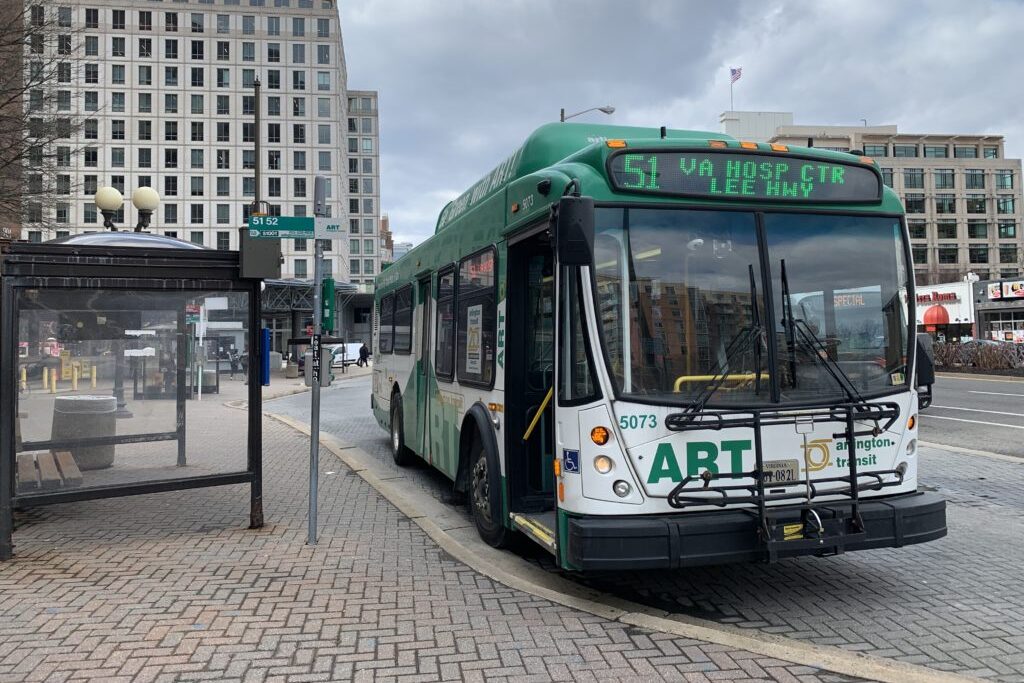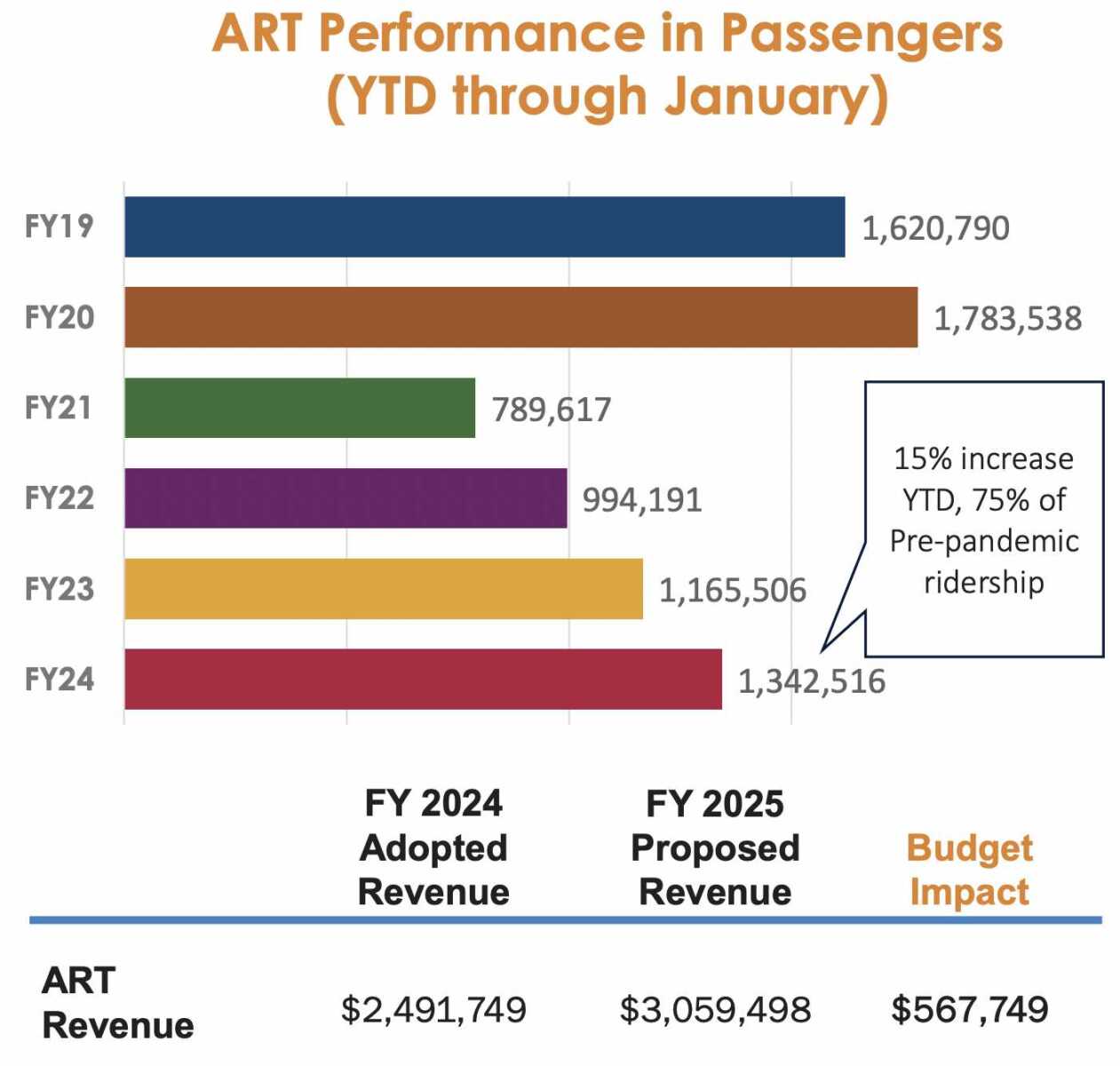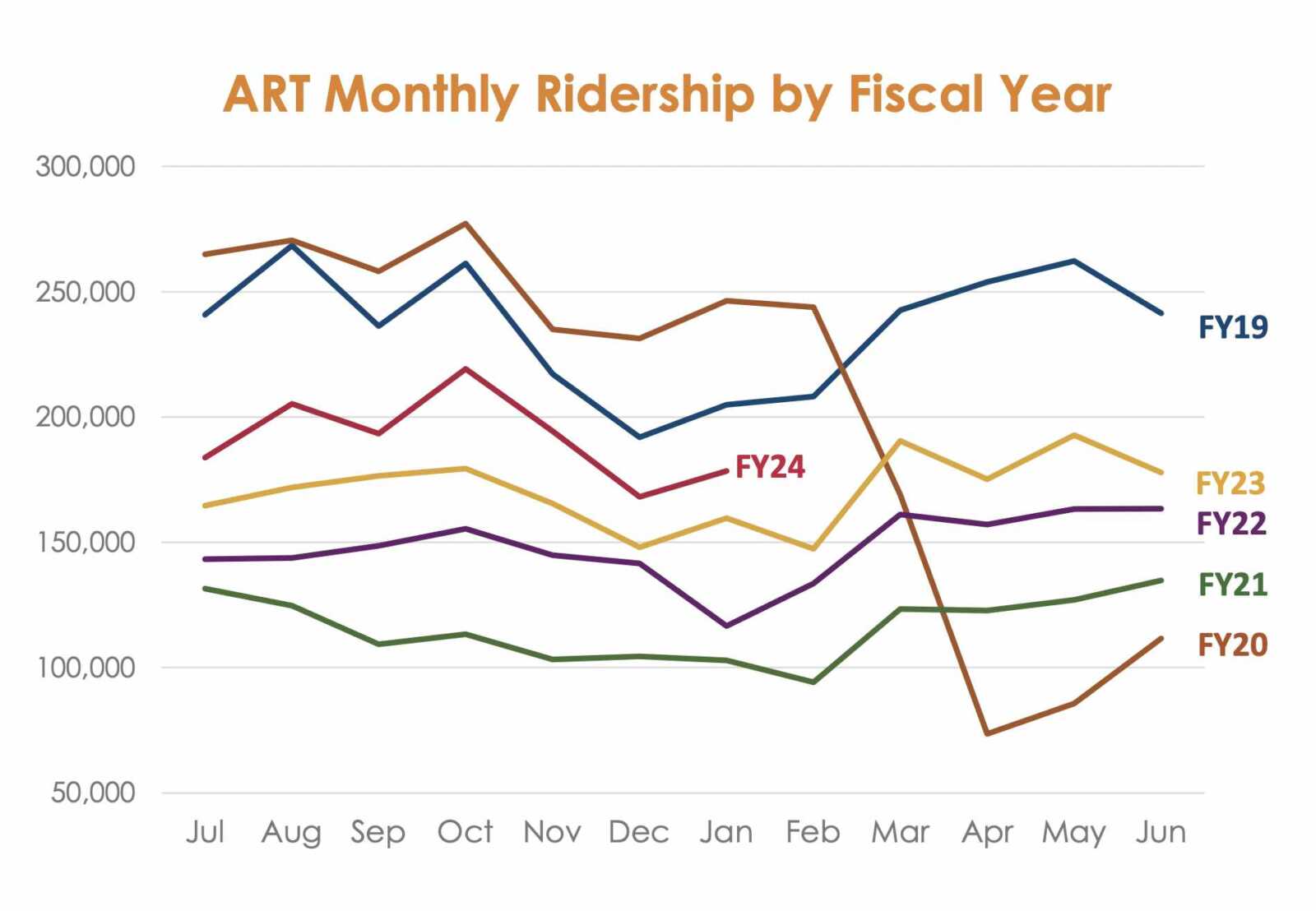
To generate some savings in its new budget, Arlington County is targeting low-performing bus routes in North Arlington.
It proposes axing one route between Courthouse and Ballston, along Lorcom Lane, that saw just 2.1 passengers per hour in the 2023 fiscal year (ART 62) for a savings of $348,613. Two bus routes — ART 61 and 53, serving the Ft. Myer and Radnor Heights neighborhoods and the Ballston to East Falls Church Metro stations — saw just 3.4 and 4.3 passengers per hour, respectively could be combined for a savings of $316,940.
“This restructuring eliminates service to the least performing sections of both routes and maintains service for lower-income and minority neighborhoods that are more transit-dependent,” per the proposed 2024-2025 budget.
ART ridership is continuing to recover steadily but remains below pre-pandemic levels, given employment behavioral changes with telework. For some, these cuts are hard but make sense; for others, they are a few drops in a bucket, given low farebox recovery ratios.
“I think it’s regrettable they’re cutting those but it’s understandable, given the low ridership,” Joan McIntyre, chair of the Climate Change, Energy and Environment Commission said in a County Board budget work session Tuesday. “It’s also an indication the county should start looking to rethinking some of its transit and how it can, literally, meet people where they are. ”

Former Transportation Commission member Joseph Warren, a transit budget hawk who has criticized the $1 million bus “super stop” and the Columbia Pike streetcar proposal, tells ARLnow that “it’s time to be serious about trying to control the costs.”
Projected operating costs are expected to increase from $25.3 million in the 2025 fiscal year to nearly $33 million by 2034, according to the county’s 10-year Transit Strategic Plan for ART. These projections do not include recommended service expansions projected to add another $20 million through 2034.
Warren says ART should pump the brakes on more weekend service until cost-recovery rates improve from current levels — around 11% as of the 2023 fiscal year and a projected 12% in the FY 2025 budget. That is under county goals of 20% for most routes and 35% for more popular ones — meaning less money to pay for new services, Warren says.
“This is the dilemma that people don’t understand. So when they say, ‘We want shorter routes, we want faster service with fewer stops,’ that means there’s going to be more service,” he continued. “The whole process is biased toward more service that doesn’t provide riders, or potential riders, with [financial] information to make a useful and helpful decision on that.”
The county says more weekend service responds to requests from residents for more service outside work hours.
“That’s why, with our [transit plan], we focus on increasing weekend and evening service and increasing frequencies — specifically the times of day that people are moving toward,” Transit Bureau Chief Lynn Rivers, who notes ridership recovery trends in Arlington are similar to those elsewhere in the region, said in the budget work session.
Arlington Dept. of Environmental Services spokeswoman Claudia Pors tells ARLnow the department does not yet have a timeline for when frequency and weekend service will be expanded.

McIntyre, meanwhile, urged the county to study micro transit, arguing on-demand van service would be ideal for North Arlington, and to take on at least some of the transportation needs of middle and high school students. Rivers says DES has applied for funding for a micro transit study.
County Board members were likewise keen on micro transit as a way to serve students, observing ART’s fare-free program for students, iRide, generated a 50% increase in student ridership. This includes the low-performing North Arlington routes: for instance, ART 62, which served Washington-Liberty High School, had 817 student rides.
“How confident are we that we’re not cutting off our hand in removing service to several high schools where we were seeing increased participation?” asked Board member Susan Cunningham. “And, to C2E2’s point, [can we] imagine a better-coordinated transit system that supports all our needs, including all our school children?”

